Tahano Hikamu

Tahano Hikamu (the “Round Script”) is the creation of Carsten Becker,
who designed it to write his constructed language Ayeri. It will be used
for further language projects that are placed in the region where this
script is used.
The script itself is an abugida after the fashion of Indic scripts
by which it is also strongly influenced. Nevertheless, this script
does not make much use of the mute sign. The use of that sign
is mostly restricted to languge teaching at the beginning of a pupil’s
education and is usually dropped later on. In “adult’s” texts, it
is only used together with difficult words, names or where the reading
of a word is unsure an can interfere with a word with another
pronunciation but the same spelling.
Notable features
- Each consonant has an inherent “a”
- The alternative consonant forms can be used in place of the regular
versions, not as well as them. - The consonant nga cannot appear at the beginning of words
- The vowels are all represented by diacritics. There is no sign for
“a” used inside words, except at the beginning and in front of vowels. - The vowel “a” acts as a vowel carrier when vowels are not attached
to consonants. It has no sound itself. - When “e” comes before a vowel other than “i” or cannot be placed
over a consonant for some other reason, it can be written under the
preceding consonant:

Tahano Hikamu
Consonants
This chart shows all the consonants needed to write Ayeri with their pronunciation in the IPA.
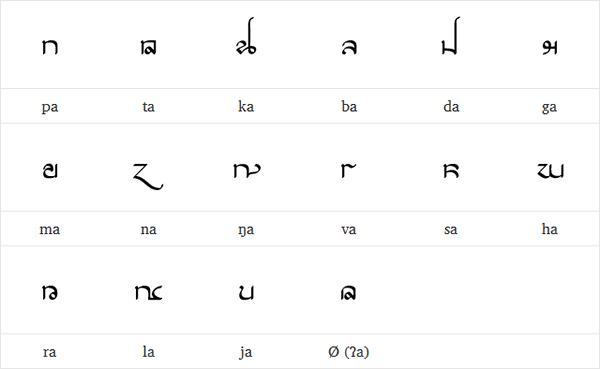
Additional consonants used for writing other languages
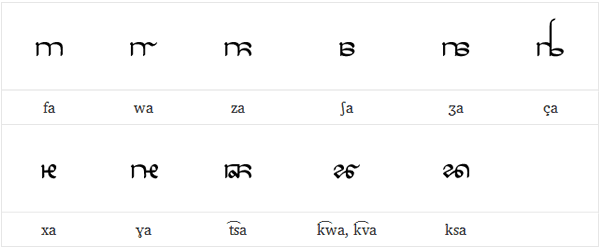
Vowel diacritics
These vowel diacritics are written above the consonants

Vowel diacritics
These vowel diacritics are written below the consonants

Other diacritics
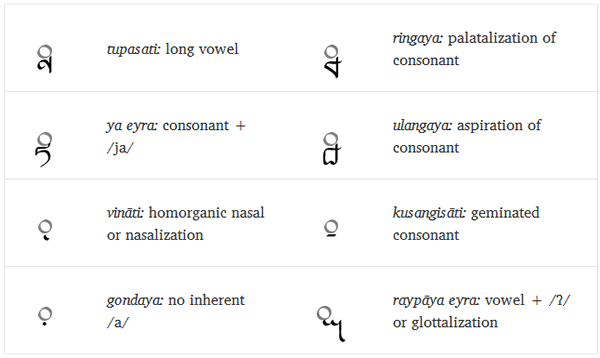
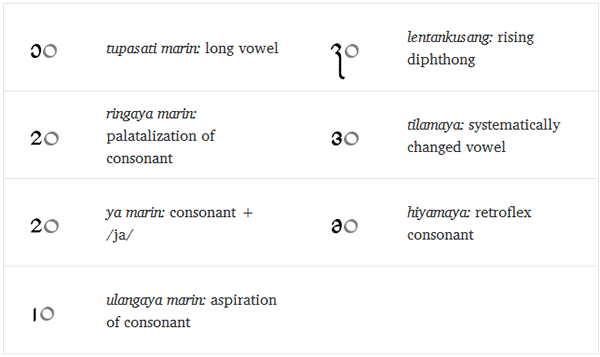
Punctuation
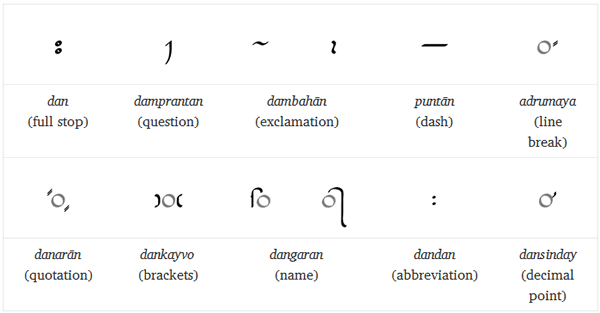
Numerals
Ayeri uses a duodecimal number-place system, so there are separate figures
for 10 (A) and 11 (B) as well as from 0 to 9.
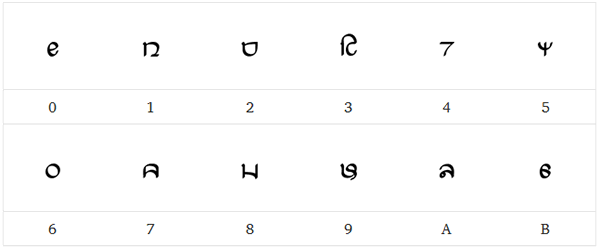
Sample text
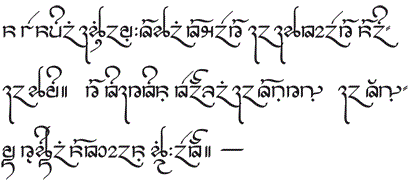
Transliteration
Sa vesayon keynam-ikan tiganeri nay kaytanyeri sino nay kamo.
Ri toraytos tenuban nay iprang, nay ang mya rankyon sitanyās ku-netu.
Translation
All human beings are born free and equal in dignity and rights. They
are endowed with reason and conscience and should act towards one another
in a spirit of brotherhood.
(Article 1 of the Universal Declaration of Human Rights)
